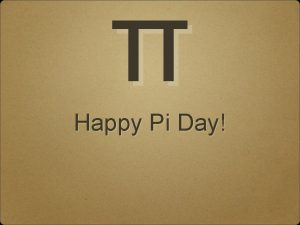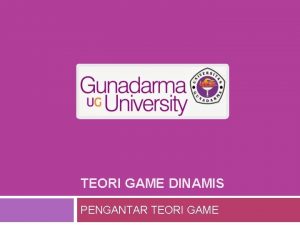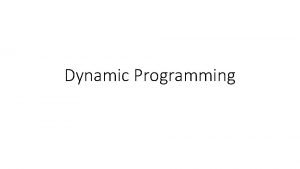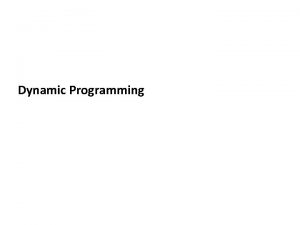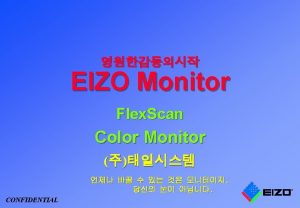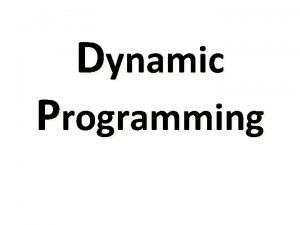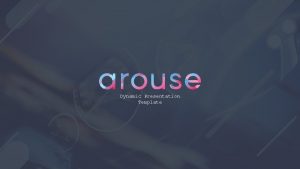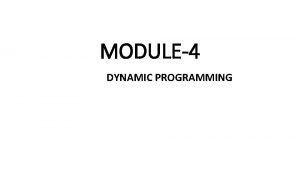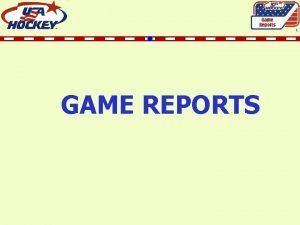Todays Meeting The game plan for todays dynamic




![Audit Approach Objective [system security] and Risks • • Authorized User Access Authorized Services Audit Approach Objective [system security] and Risks • • Authorized User Access Authorized Services](https://slidetodoc.com/presentation_image_h/0c88d5d27629f63c7c0b7e0db2958623/image-5.jpg)












- Slides: 17

Today’s Meeting • The game plan for today’s dynamic, fast track, off site meeting is to provide etched in stone exposure to those demograhically heads up elite who think outside the box regarding the best of breed and best practice techniques to drill down into the LINUX operating system metrics to provide a no brainer prototype deliverable that can add value to a scale where the recipient can be viewed as a leveraged top down virual fault tolerant market leader in profitability. • Do LINUX, impress someone

LINUX Operating System Audit & Assessment 3/17/2004 www. lsap. org www. linuxsecurity. org Michael T Hoesing CISA, CISSP, CIA, CCP, CMA, CPA IS Audit Manager First National Nebraska Inc mhoesing@fnni. com (402) 636 -6646 Standard disclaimer, “‘I never said THAT, and if you did THAT, and something broke, it’s your own durn fault. ” also “The views expressed here are mine, not my employer’s. ” When using any tool, do no harm.

Learning Objectives • • • Define an Audit Approach/Methodology Determine Audit Goals Individual Tests to Achieve the Goals Scripting Hints Other Auditing Example – an independent assessment process (take home script)

Audit Approach • • Define System Under Review (scope, LINUX) Determine Key Success Criteria (objectives) Assess Risk (focus test resources where appropriate) Gather Standards (policy, procedures, regulation, contracts) Inventory the Current State (the script) Compare the Current State to Standards (analysis) Investigate Differences (reporting)
![Audit Approach Objective system security and Risks Authorized User Access Authorized Services Audit Approach Objective [system security] and Risks • • Authorized User Access Authorized Services](https://slidetodoc.com/presentation_image_h/0c88d5d27629f63c7c0b7e0db2958623/image-5.jpg)
Audit Approach Objective [system security] and Risks • • Authorized User Access Authorized Services Authorized Connections Authorized File Access Appropriate Recording/Logging Appropriate Security Parameters Authorized Applications High + High

Standards • • Organization Policy Regulation Contractual Conformance Industry Best Practice – Center for Internet Security (CIS Linux Benchmark Standards & Scoring Tool https: //www. cisecurity. org/sub_form. html different approach = compares to specific metrics (8. 3 password maximum days > 90 shows as negative)

Start Script Demo Here • • Show the Audit Program Show the Script File Run the Script Review the Results

LINUX Tests – User Access • • • Who can be on the system, match to job function? Who is on the system right now? Password encryption in use? Who can be GOD ? From where can GOD access the system? What default and group ID’s are present?

LINUX Tests – Services • • • What services were loaded at startup? What processes are currently running? What services are set to run? What modules are loaded? What is accessing the CPU currently? What jobs are scheduled to run?

LINUX Tests – Connections • What networking devices are attached? • What other hosts can connect to the system under review? • What communication protocols are used?

LINUX Tests – File Systems • • What file systems are in use? Which files and directories are world writeable? What are the permissions on sensitive files & directories? What files were changed in the last day? 1. Who changed it? 2. Why, was that authorized? 3. Was the change tested?

LINUX Tests – Logging • • • What was recorded recently in the systems event log? /var/log/messages What other logs are available? Who can alter the log file?

LINUX Tests – Security Parms • What automated password controls are in place? – Min days – Max days – Length • What environment controls are in place? – Last users – shells

LINUX Tests – Applications • • • What applications are installed? What malware is present? Are there any monitoring tools?

Scripting Hints • • • User Interactive Predict and Deal with Errors, capture errors Determine if a file or directory exists before executing a command

Other • • • Test, test Before using the Script Flavors of LINUX (Su. SE 9. 0) Portable to UNIX ? Time 5 – 10 minutes if not testing WW files CPU usage - minimal

Other • • SNARE – “IDS” www. intersectalliance. com More industry standards – www. linuxsecurity. com C 2 Secure Logging (auditing) for LINUX [SAL] – http: //secureaudit. sourceforge. net Auditing Linux – Krishni Naidu – • • http: //www. sans. org/score/checklists/Auditing. Linux. doc Bastille does not work with Su. SE chksyslog and chkexploit_1_13
 For today's meeting
For today's meeting Todays plan
Todays plan Today meeting or today's meeting
Today meeting or today's meeting What is meeting and types of meeting
What is meeting and types of meeting Types of meeting
Types of meeting Transferered
Transferered Fspos vägledning för kontinuitetshantering
Fspos vägledning för kontinuitetshantering Typiska drag för en novell
Typiska drag för en novell Tack för att ni lyssnade bild
Tack för att ni lyssnade bild Ekologiskt fotavtryck
Ekologiskt fotavtryck Shingelfrisyren
Shingelfrisyren En lathund för arbete med kontinuitetshantering
En lathund för arbete med kontinuitetshantering Adressändring ideell förening
Adressändring ideell förening Tidbok
Tidbok Sura för anatom
Sura för anatom Förklara densitet för barn
Förklara densitet för barn Datorkunskap för nybörjare
Datorkunskap för nybörjare Tack för att ni lyssnade bild
Tack för att ni lyssnade bild

